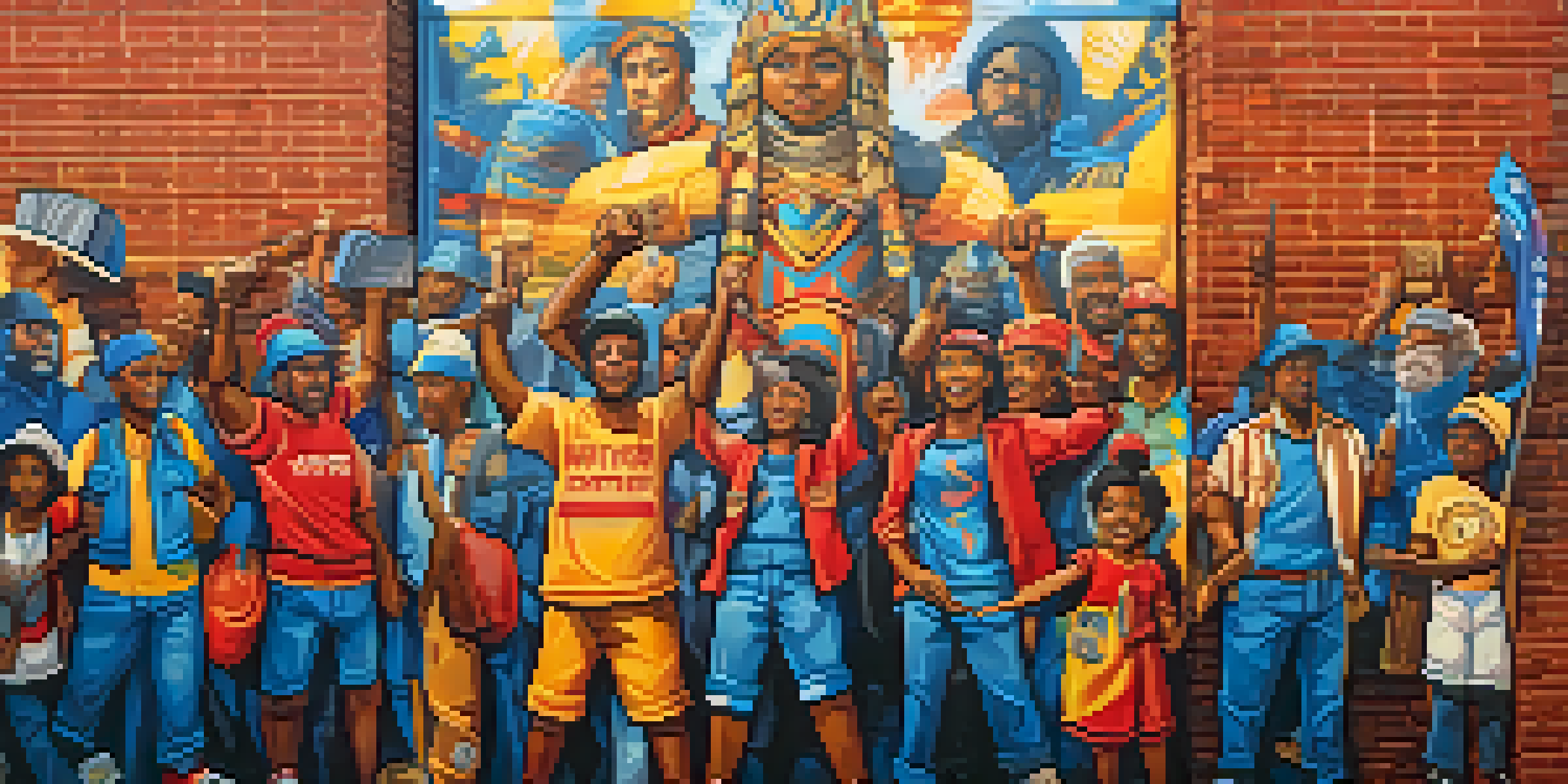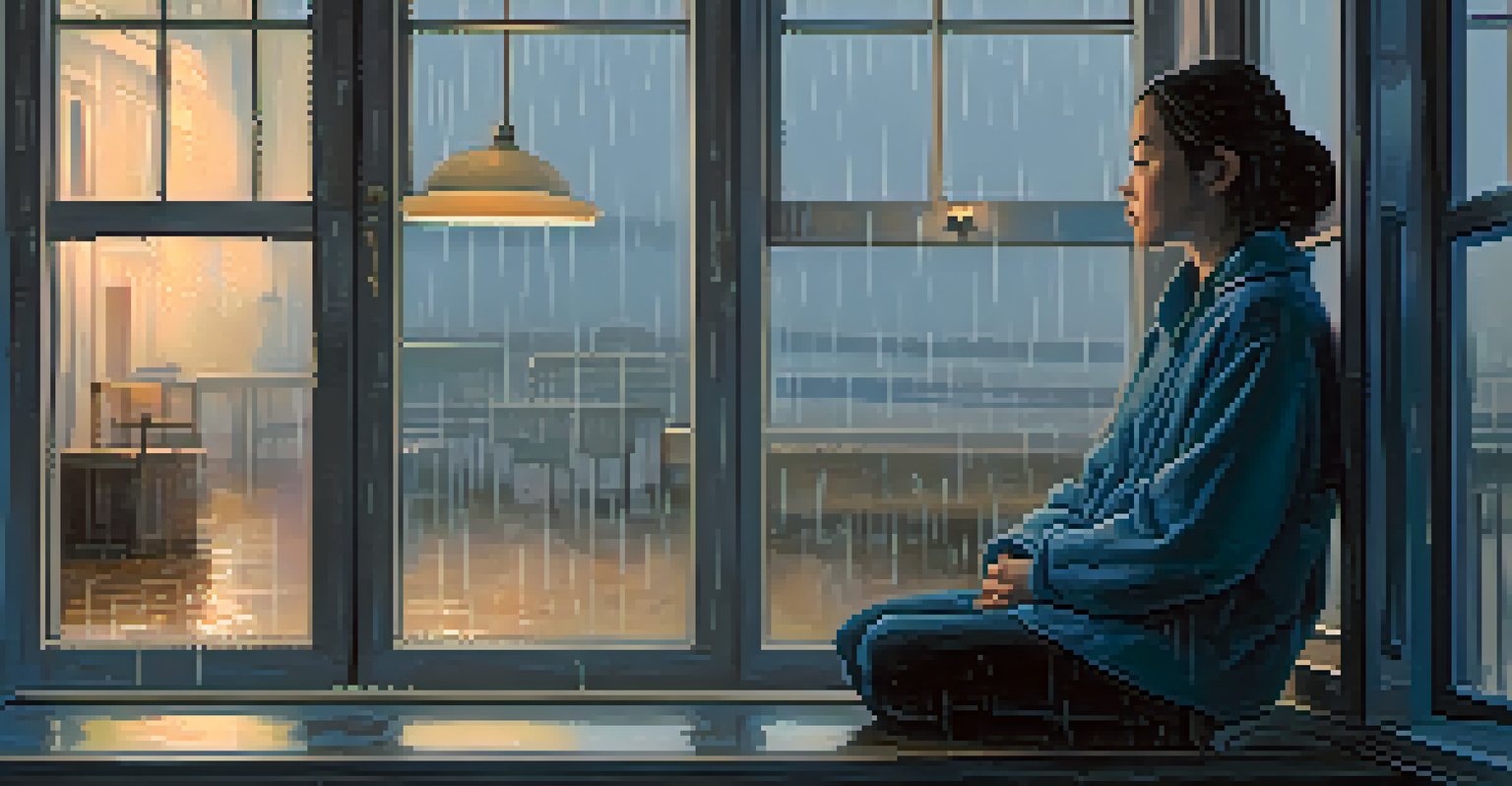The Impact of Global Crises on Contemporary Art Narratives

Understanding Global Crises and Their Influence on Art
Global crises, such as pandemics, wars, and economic downturns, often leave a profound mark on society. These events not only disrupt daily life but also challenge artists to respond creatively. The urgency of these situations catalyzes new artistic expressions that reflect the collective human experience.
Art is a reflection of the times, a response to the world around us, capturing the essence of our collective experience.
Contemporary art, characterized by its fluidity and responsiveness, serves as a mirror to societal conditions. Artists harness their platforms to comment on, critique, and reimagine the world around them, often leading to innovative narratives. Through their work, they invite audiences to engage with pressing issues and consider their implications.
Moreover, the intersection of crises and art fosters a sense of community and shared experience. As people grapple with uncertainty, art becomes a way to process emotions and connect with others, emphasizing the role of creativity in times of turmoil.
Art as a Reflection of Societal Struggles
Contemporary art often reflects the struggles faced by society. For instance, artists may tackle themes of social injustice, inequality, and environmental degradation, which have become increasingly prominent in recent years. Through various mediums, they highlight the realities of marginalized communities and draw attention to systemic issues.

One powerful example is the use of street art during social movements. Artists like Banksy and others utilize public spaces to communicate messages of resistance and hope. These visual narratives resonate deeply with the public, serving both as a form of protest and a means of fostering dialogue.
Art Reflects Societal Challenges
Contemporary art serves as a powerful response to global crises, highlighting issues like social injustice and environmental degradation.
Moreover, this art form often transcends cultural and geographic boundaries, uniting people in a shared cause. By showcasing individual stories within a broader context, art becomes a compelling vehicle for empathy and awareness, urging society to confront uncomfortable truths.
The Role of Technology in Crisis-Driven Art
In the digital age, technology plays a crucial role in how art is created and disseminated. During global crises, artists have increasingly turned to digital platforms to share their work and engage with audiences. This shift not only expands the reach of their narratives but also allows for immediate responses to ongoing events.
In times of crisis, art becomes a lifeline, a way to process emotions and connect with others through shared experience.
For instance, social media has become a vital tool for artists to document their thoughts and creations in real-time. Platforms like Instagram and TikTok enable artists to share their perspectives, often going viral and sparking global conversations. This accessibility democratizes art, allowing diverse voices to emerge and be heard.
Furthermore, technology facilitates collaboration among artists across the globe, fostering a sense of solidarity. Virtual exhibitions and online workshops bring together creatives who might otherwise be isolated, amplifying their messages and enhancing the impact of their work during crises.
Crisis-Inspired Art Movements and Their Legacy
Throughout history, numerous art movements have emerged in response to crises. From Dadaism, which arose after World War I, to the Harlem Renaissance during the civil rights movement, artists have consistently used their craft to navigate turbulent times. These movements not only reflect the challenges of their era but also inspire future generations of artists.
Contemporary art is no different; we witness the rise of movements that address climate change, refugee crises, and social justice. Artists are increasingly coming together to form collectives that amplify their voices and address collective concerns. This collaborative spirit not only enriches the art world but also strengthens the impact of their messages.
Technology Expands Artistic Reach
Digital platforms enable artists to share their work widely, fostering immediate engagement and collaboration during crises.
The legacy of crisis-inspired art movements is evident in today's cultural landscape. They serve as reminders of art's power to effect change and influence societal values, encouraging ongoing dialogue about pressing issues.
The Emotional Impact of Art During Crises
Art has a profound ability to evoke emotions, especially during difficult times. During global crises, people often seek solace and understanding through artistic expressions. Whether it’s a poignant painting or a heart-wrenching performance, art can resonate deeply, allowing viewers to process their feelings and experiences.
For example, during the COVID-19 pandemic, many artists produced works that captured the isolation and anxiety felt by individuals worldwide. These pieces not only offered a sense of connection but also served as a reminder that others share similar struggles. Such emotional experiences highlight art's role as a healer and a source of comfort.
Additionally, the act of creating art can be therapeutic for artists themselves. In expressing their thoughts and emotions, artists often find clarity and purpose, transforming personal pain into powerful narratives that resonate with audiences.
Global Crises and the Shifting Art Market
The art market is not immune to the effects of global crises. Economic downturns often lead to shifts in buying patterns, with collectors reconsidering their investments. This can create challenges for artists, particularly emerging ones, as funding for new projects may dwindle during uncertain times.
However, crises can also lead to new opportunities within the art world. For instance, the rise of online galleries and virtual auctions has made art more accessible to a broader audience. This shift not only democratizes the market but also introduces new ways for artists to connect with collectors and patrons.
Legacy of Crisis-Inspired Movements
Historical art movements born from crises continue to inspire contemporary artists, emphasizing art's role in effecting social change.
Moreover, artists who address contemporary issues often attract attention from socially conscious collectors. Works that engage with themes relevant to current crises can command significant interest, leading to a fusion of art and activism that reshapes the market landscape.
The Future of Art in Response to Global Crises
As we look to the future, the relationship between art and global crises will undoubtedly continue to evolve. Artists will remain at the forefront, using their creativity to respond to new challenges and inspire change. The adaptability of contemporary art ensures its relevance in addressing the complexities of an ever-changing world.
Emerging trends, such as eco-art and digital activism, will likely gain momentum as artists explore innovative ways to engage with pressing issues. By leveraging technology and collaboration, artists can amplify their messages and foster a deeper understanding of the problems we face.

Ultimately, the resilience of art and its ability to reflect human experiences will ensure its enduring importance. As long as global crises persist, artists will continue to play a vital role in shaping narratives that resonate with society, encouraging reflection, dialogue, and action.